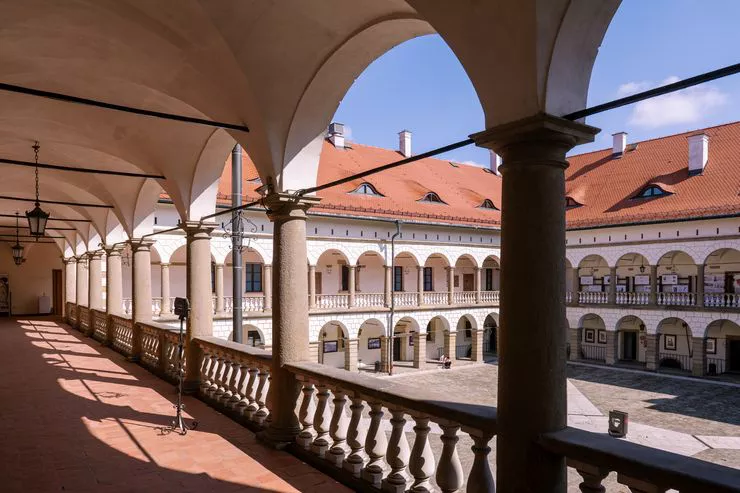





Niepołomice: heritage among pristine nature.
What place could be better for a short getaway from the city than one beloved by its king centuries ago? And since that king (the only one Poles called Great!) reigned 700 years ago, the place has turned into a heritage site with, of course, the seven-hundred-year-old royal castle. It may just be a hunting lodge, but we affectionately call it the “Little Wawel”, an especially fitting name since many paintings and sculptures from the royal chambers were moved there for the renovation of Wawel chambers.

The Niepołomice Castle stands on the edge of Puszcza Niepołomicka or the Niepołomice Primeval Woods: the best-preserved diverse lowland forest in Poland is just 12 miles from the city. Over 250 of the forest’s 27,000 acres are in six nature reserves with endemic ferns, 200-year-old tree stands, and marshes.
You are welcome to wander around the woods of Puszcza Niepołomicka. One option to get there is to take a train to Kłaj and walk across the woods to Niepołomice. It’s hard to get lost, as the paths, rather than winding to mislead you, mostly cross at right angles. You can also follow one of the four waymarked trails: green, red (taking you to the Bison Reservation), blue, and black, whose combined length exceeds 20 miles. There are also plenty of bridleways and cycle paths in the woods, should you prefer not to walk. The area is easily accessible by bike from Kraków. You can follow the local section of the Amber Route Greenway, linking places as distant as Budapest and the Baltic Sea, or the Salina Cracoviensis Cycle Path Ring, which will also take you to the nearby medieval salt mines in Bochnia and Wieliczka.
Following waymarked trails is also a great option if you want to reach places of special interest: the reservations, sandy hills, historical trees, and places important for Polish history.
After some physical exertion, it is good to return (or arrive) in Niepołomice, have a meal (your humble narrator would be tempted by the traditional ice cream in the Market Square), and see at least some of the seven exhibitions in the Museum operating in the Castle. And since it also houses a restaurant and hotel, I can comfortably leave you here to rest or stay overnight. Ideally, before another day’s worth of exploring the area.
Niepołomice takes its name from the Early Slavic words nie (meaning “not”) and połom (which can be translated as “felling”), which together denote a place where no woods were cleared. Or, more literally, “the unbroken forest”.
As the name suggests, the European Bison (Bison bonasus), also known as the wisent, is native to Europe. This magnificent animal boasts a taller and more graceful body than its American counterpart. The species has been successfully revived from the brink of extinction through dedicated conservation efforts, particularly in Puszcza Niepołomicka.








